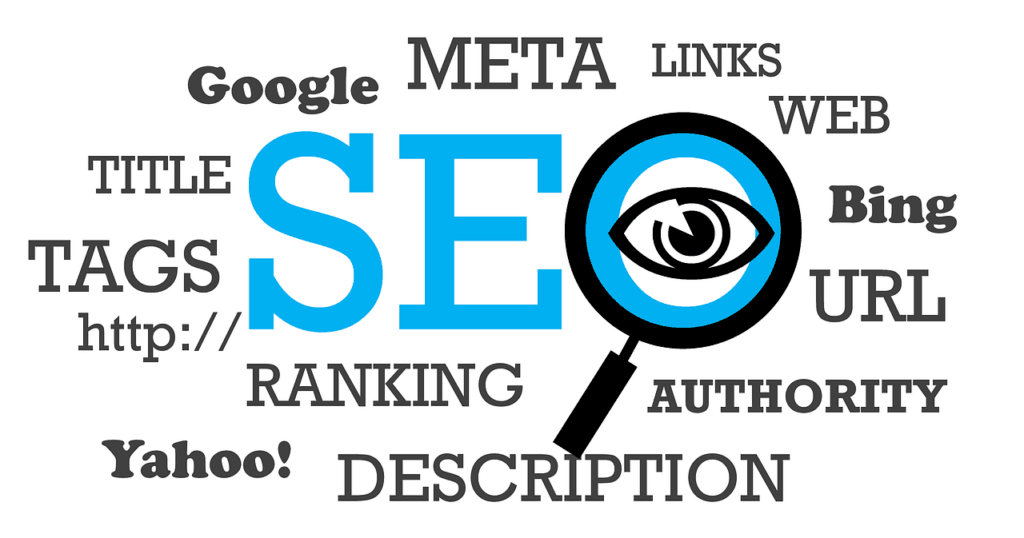(This Article has been revised, edited and added to, by Poulomi Chakraborty.)
Navigating the vast realm of the internet can be likened to maneuvering through a colossal, bustling metropolis. In this city of endless information, medical websites are akin to crucial healthcare facilities. Yet, much like a world-class hospital, a medical website’s value isn’t just in its existence but its accessibility. This is where On-Page SEO, the intricate art of optimizing individual web pages, becomes the guiding map, ensuring that those in need of medical guidance find their way swiftly and effectively. In this comprehensive guide, we’ll embark on a journey to dissect, understand, and master the nuances of On-Page SEO tailored explicitly for medical websites.
Understanding the Heartbeat of On-Page SEO

At its core, On-Page SEO revolves around optimizing content and the underlying source code of individual pages. For medical websites, this optimization isn’t just for search engines but, more importantly, for users seeking medical knowledge or services.
- User Intent & Relevance: Does your page provide answers to the queries your audience is inputting? For instance, a page optimized for “symptoms of hypertension” should offer detailed insights into those specific signs.
- Clarity & Organization: Medical information can be intricate. Structured, clear, and concise content ensures that users can easily digest and understand the provided information.
- Technical Health: Beyond content, the page’s loading speed, mobile responsiveness, and underlying code play a pivotal role in On-Page SEO.
Embracing Semantic SEO: Beyond Keywords
In the realm of on-page SEO, understanding and leveraging semantic SEO is crucial for medical websites. This approach goes beyond traditional keyword optimization, focusing on understanding the intent behind user queries and providing comprehensive answers that fulfill this intent. For startup founders, this means creating content that not only answers direct questions but also addresses related topics and questions that users might not have explicitly asked. By doing so, you cater to the sophisticated algorithms of search engines like Google, which aim to understand and match the context of queries with the most relevant content.
Semantic SEO involves structuring your content to answer a broader spectrum of questions, thus enhancing your website’s visibility and user engagement. This strategic approach requires thorough research to identify related topics and questions your target audience might explore. Incorporating this into your content strategy ensures a broader coverage and improves your chances of capturing traffic from a variety of search queries, especially those in the long-tail spectrum which are often more specific and less competitive.
Enhancing User Experience with Multimedia Elements
User experience (UX) is a pivotal component of on-page SEO, particularly for medical websites where users seek clarity and assurance alongside information. Incorporating multimedia elements like videos, infographics, and interactive tools can significantly enhance the user experience by providing information in more digestible and engaging formats. For startups, this means not just presenting medical information, but doing so in a way that resonates with and is accessible to your audience.
Videos, for example, can simplify complex medical procedures or conditions, making them understandable for the layperson. Infographics can highlight key statistics or steps in a process, offering visual summaries that complement your textual content. Interactive tools, such as symptom checkers or treatment option calculators, engage users directly, providing personalized insights that enhance the relevance and value of your site. These elements not only improve user engagement but also contribute to the semantic richness of your content, supporting your semantic SEO efforts.
Investing in high-quality multimedia content reflects your commitment to providing value and enhances your website’s authority. It’s a strategic investment that can set your medical website apart from competitors, making it a go-to resource for both patients and search engines.
Implementing Advanced Structured Data for Enhanced Visibility
Structured data, or schema markup, is a powerful tool for improving your website’s visibility in search results. For medical websites, implementing advanced structured data goes beyond basic schemas, enabling you to highlight unique aspects of your content and services directly in the search results. This includes detailed information on medical conditions, treatments, facilities, and professionals, which can be showcased in rich snippets or knowledge panels.
For startup founders, this means adopting a proactive approach to structured data, identifying and implementing the most relevant schemas for your content. This not only enhances your presence in search results but also improves the match between user queries and your content, driving more targeted traffic to your site. Advanced schemas can include information on medical conditions, FAQs, how-to guides for treatments, and profiles of medical professionals, among others.
Leveraging these advanced structured data types requires a detailed understanding of the schema.org vocabulary and the specific needs of your target audience. By marking up your content with this detailed information, you increase the chances of your website standing out in search results, thereby attracting more clicks and engagement.
The Pillars of Medical Content Optimization
When crafting or refining content for medical websites, specific foundational principles enhance both user experience and search visibility.
- Keyword Integration: Understand the primary and secondary keywords your audience uses. These terms should naturally weave into your content, from titles and headers to the main body.
- Content Depth: Medical topics often require a depth of coverage. Ensure that content is comprehensive, answering potential user queries and offering a holistic view.
- Authenticity & Authority: Given the critical nature of medical information, ensure all content is accurate, backed by reputable sources, and authored or reviewed by qualified professionals.
Mastering Topical Authority in Medical Niches
In the ever-evolving landscape of digital marketing, establishing topical authority within specific medical niches is a cornerstone of content optimization. For startup founders, this means diving deep into the nuances of your specialty, covering not just the basics but also the latest research, trends, and discussions in your field. Building topical authority requires a strategic approach to content creation, focusing on developing comprehensive resources that cover a topic exhaustively.
The journey towards becoming a recognized authority in your niche involves curating a content library that answers every conceivable question your audience might have. This includes detailed guides, research summaries, expert interviews, and case studies that demonstrate your in-depth knowledge and commitment to your specialty. Such a rich content ecosystem not only boosts your SEO performance through increased relevance and engagement but also positions your website as the go-to source for authoritative information in your medical field.
Harnessing the Power of Storytelling in Medical Content
Storytelling is a potent tool in the realm of medical content optimization, capable of transforming static information into compelling narratives that resonate with readers. For startups, integrating storytelling into your content strategy means going beyond the facts to connect with your audience on a human level. Sharing patient success stories, the journey of medical discoveries, or the personal experiences of healthcare professionals adds a relatable, emotional dimension to your content.
Incorporating storytelling does not dilute the scientific accuracy or integrity of your content. Instead, it enhances the accessibility and engagement of your information, making complex medical concepts easier to understand and remember. By weaving narratives throughout your content, you create memorable experiences that foster a deeper connection with your audience, encouraging longer site visits and higher levels of engagement, which are critical metrics for SEO success.
Optimizing for the Future: Predictive Analytics and Content Creation
The integration of predictive analytics into content strategy represents a forward-thinking approach to medical content optimization. For startup founders, leveraging predictive analytics involves using data-driven insights to anticipate future trends, user needs, and content opportunities in the medical field. This proactive strategy enables you to create content that not only addresses current queries but also positions your site as a leader in emerging topics.
Implementing predictive analytics requires access to and analysis of large data sets, including search trends, social media discussions, and healthcare developments. By identifying patterns and predicting shifts in user interest or medical advancements, you can tailor your content strategy to stay ahead of the curve. This might include developing content around upcoming medical technologies, evolving treatment methods, or emerging health concerns before they become mainstream topics.
Meta Elements: Crafting the First Impression
Before a user clicks on a webpage from search results, they interact with the page’s meta elements. These serve as a preliminary introduction, setting expectations.
- Meta Titles: This is the clickable headline displayed on search engine results. It should be concise, incorporate the primary keyword, and align with the page’s content.
- Meta Descriptions: While not a direct ranking factor, this brief summary provides users with a snapshot of the page’s content. Craft it to entice clicks while offering genuine insights.
- URL Structure: Clean, descriptive URLs with relevant keywords not only assist in better rankings but also enhance user trust. For instance, “/cardiology-services” is more descriptive than “/services123.”
The Art of Meta Title Optimization
The meta title stands as the first handshake between your website and potential visitors, carrying immense weight in both SEO and user engagement. For medical website founders, mastering the art of meta title optimization means crafting titles that are not only SEO-friendly but also compelling to the reader. The key lies in balancing keyword inclusion with emotional resonance, ensuring that your titles speak directly to the needs and concerns of your audience while also incorporating critical search terms.
Creating an effective meta title involves understanding the queries and pain points of your target audience. It’s about weaving in the primary keyword in a way that feels natural and directly addresses the user’s intent. Moreover, introducing power words or emotional triggers can significantly enhance the click-through rate by invoking curiosity or offering clear benefits. This strategic approach ensures that your web pages stand out in the crowded search engine results pages (SERPs), attracting more clicks and driving higher traffic to your site.
Crafting Meta Descriptions That Convert
While the meta description may not directly influence search rankings, its importance in driving user engagement and clicks cannot be overstated. For startups in the medical field, the meta description offers a precious opportunity to further elaborate on the promise made in the meta title, providing a sneak peek into the content that awaits the user. This brief snippet of text should encapsulate the essence of your page, highlighting the value and answers it provides to the searcher’s query.
The secret to crafting meta descriptions that convert lies in their ability to persuade and reassure. Given the sensitive nature of medical information, incorporating elements of trust and authority can make a significant difference. Mentioning credentials, years of experience, or unique offerings can bolster credibility. Furthermore, including a clear call-to-action (CTA) within your meta description can guide users towards the next step, whether it’s reading an article, signing up for a newsletter, or scheduling a consultation. This strategic construction of meta descriptions ensures they serve as an effective bridge between the search result and your website, maximizing engagement and conversion opportunities.
Leveraging URL Structure for Maximum Impact
The structure of your website’s URLs plays a crucial role in both user experience and search engine optimization. For medical startups, creating clean, descriptive URLs is a strategy that pays dividends in clarity and searchability. A well-constructed URL should intuitively indicate the content of the page, incorporating relevant keywords in a way that is both concise and informative.
Beyond keyword inclusion, the simplicity and readability of your URLs contribute to a better user experience, making them easier to remember and share. Additionally, a logical URL structure, reflecting the hierarchy of your website, aids search engines in understanding and indexing your content more effectively. This not only improves your site’s navigation but also enhances its overall SEO performance. Adopting a consistent naming convention across your site fosters a sense of order and professionalism, further instilling trust in your visitors.
Image Optimization: Beyond the Visual Appeal
Medical websites often employ images, be it diagrams, facility photos, or staff portraits. Optimizing these images serves dual purposes: enhancing page speed and providing additional content relevancy signals.
- Alt Text: Every image should have a descriptive alt text, providing search engines with context about the image’s content and aiding accessibility for users with visual impairments.
- File Size & Format: Large image files can hamper page loading speeds. Compress images without sacrificing quality and choose appropriate formats (like JPEG for photos and PNG for diagrams).
- Descriptive Filenames: Instead of generic filenames like “image1.jpg,” use descriptive names like “knee-joint-diagram.png.”
Integrating Visual Search into Image Optimization
In the digital age, visual search technology has revolutionized the way users find and engage with content online. For medical website founders, integrating visual search capabilities into your image optimization strategy can significantly enhance the discoverability and user engagement of your site. This involves optimizing images in a way that they can be easily identified and indexed by visual search engines, expanding your reach beyond traditional text-based queries.
To leverage visual search, start by ensuring that your images are of high quality and clearly depict the subject matter they represent. Utilizing high-resolution images that are visually appealing and contextually relevant can increase your chances of appearing in visual search results. Furthermore, adopting descriptive file names and alt text that include relevant keywords and context can help visual search algorithms understand and categorize your images more effectively. This strategic approach not only boosts your visibility in visual search results but also enhances the overall user experience by providing more pathways to discover your content.
Leveraging the Power of Image Sitemaps
Creating and submitting an image sitemap to search engines is a critical step in maximizing the SEO potential of your website’s images. For startups in the medical field, an image sitemap serves as a roadmap, guiding search engines to all the valuable visual content you offer. This is particularly important for medical websites, where images play a crucial role in conveying complex information, showcasing facilities, or introducing medical staff.
An image sitemap allows you to provide additional details about each image, such as the caption, title, geo-location, and license information, making it easier for search engines to understand and index your images accurately. By including all your website’s images in a sitemap, you ensure none are overlooked by search engines, improving your visibility in image search results. This strategic inclusion not only aids in SEO but also enhances the discoverability of your visual content, attracting more visitors to your site.
Emphasizing Accessibility in Image Optimization
Accessibility should be a cornerstone of your image optimization strategy, ensuring that your content is inclusive and reachable to all users, including those with visual impairments. For medical website founders, this means adopting practices that make images accessible to screen readers and other assistive technologies. Providing detailed, descriptive alt text for every image is a fundamental practice in this regard. Alt text should accurately describe the image’s content and function, offering context and relevance to users who might not be able to see the image.
Furthermore, considering the use of captions and titles that provide additional information and context can enhance understanding for all users, including those relying on assistive technologies. This focus on accessibility not only improves the user experience for a broader audience but also reflects positively on your brand, demonstrating a commitment to inclusivity. From an SEO perspective, making your images more accessible can lead to increased engagement and longer visit durations, signaling to search engines the quality and relevance of your content.
Structural Elements: The Anatomy of an Optimized Page
The structure of a webpage, much like the human body, is integral to its function. In On-Page SEO, structural elements not only enhance readability but also guide search engines in understanding content hierarchy.
- Headers & Sub headers: Using H1, H2, H3 tags appropriately provides a content hierarchy. Ensure the primary keyword features in the H1, while related terms or subtopics can be integrated into sub headers.
- Internal Linking: Linking to other relevant pages on your website provides users with additional information pathways and helps distribute page authority throughout the site. For instance, a page about “diabetes treatment” can link to related pages on “diabetes symptoms” or “diet for diabetic patients.”
- Short & Descriptive Paragraphs: Medical content can be dense. Breaking it into shorter, descriptive paragraphs enhances readability, making it more user-friendly.
Crafting an Intuitive Site Architecture
A well-structured site architecture is not just about enhancing user navigation; it’s a strategic SEO asset that guides both users and search engines through your medical website’s content. For startup founders, developing an intuitive site architecture involves creating a logical hierarchy of information, where each page is accessible within a few clicks from the homepage. This structure should reflect the priority and relationship between various topics, ensuring that users can effortlessly find the information they seek.
Incorporating breadcrumb navigation is a key strategy within your site architecture. Breadcrumbs not only help users understand their current location within your website but also provide search engines with another layer of information on the site structure. This clarity can improve your site’s indexing, making it easier for search engines to categorize and rank your content. Moreover, a well-thought-out site architecture can enhance your site’s link equity distribution, ensuring that valuable link juice flows to the most important pages, boosting their visibility in search results.
Optimizing Page Depth and Internal Linking
Page depth refers to the number of clicks required to reach a page from the home page. An optimized medical website keeps the most valuable content within a shallow depth, ideally not more than three clicks away from the homepage. This approach not only improves the user experience by making information easily accessible but also aids search engines in discovering and indexing content efficiently.
Internal linking plays a pivotal role in enhancing the SEO structure of your medical website. Strategic internal linking involves using keyword-rich anchor text to link related content within your site, helping search engines understand the context and relevance of each page. This technique not only boosts the SEO value of individual pages but also enhances the overall usability of your website, encouraging users to explore further and engage with more content. Effective internal linking can lead to lower bounce rates and higher session durations, which are positive signals to search engines.
Leveraging the Power of Rich Snippets
Rich snippets, generated from structured data markup, can significantly enhance your website’s visibility in search results by providing more detailed information directly in the SERPs. For medical websites, leveraging rich snippets can mean the difference between a standard search result and one that stands out with additional details like ratings, reviews, or FAQs.
Implementing schema markup for medical articles, services, and FAQs can encourage search engines to display rich snippets for your pages, improving click-through rates and attracting more qualified traffic. This requires a strategic approach to select the most relevant and beneficial schema types for your content, ensuring that the structured data you implement accurately represents your page content and offers real value to users in search results.
Engagement Metrics: Capturing User Pulse

The way users interact with your page provides invaluable insights. High engagement often correlates with content relevance and quality.
- Bounce Rate: A high bounce rate might indicate that users didn’t find what they were looking for. Analyzing and refining content or user experience can address this.
- Time on Page: A longer time spent on a page often indicates that users found the content valuable and engaged with it deeply.
- Click-Through Rate (CTR): A higher CTR from search results indicates that your meta elements are effectively enticing users to click on your content.
Understanding and Amplifying User Engagement Signals
User engagement metrics offer invaluable insights into how visitors interact with your medical website, serving as a direct reflection of content relevance, quality, and user experience. For startup founders, diving deeper into these metrics can uncover opportunities to refine your website strategy, ensuring that you not only attract but also retain user interest.
Analyzing User Behavior for Content Optimization
The journey toward optimizing user engagement begins with a thorough analysis of behavior metrics such as bounce rate, time on page, and session duration. High bounce rates may indicate that visitors are not finding what they expect or that the page does not engage them sufficiently. To address this, consider revisiting your content’s relevance and presentation. Is your content answering the queries that led visitors to your page? Are you providing clear, actionable information in an easily digestible format? Enhancing content quality and aligning it more closely with user intent can significantly reduce bounce rates and increase time spent on your site.
Leveraging Interactive Content to Boost Engagement
Incorporating interactive content like quizzes, surveys, and assessment tools can transform passive browsing into active engagement. For medical websites, this could mean interactive symptom checkers, lifestyle quizzes, or risk assessment tools relevant to your specialty. These elements not only make the user experience more engaging but also provide personalized value to visitors, encouraging them to spend more time on your site and explore further. This increased engagement sends positive signals to search engines about the quality and relevance of your content, potentially boosting your SEO rankings.
Enhancing Engagement Through Personalization
Personalization is a powerful strategy to increase user engagement on your medical website. By tailoring content, recommendations, and user experiences to individual needs and preferences, you can create a more relevant and engaging website experience.
Implementing User-Centric Content Strategies
Developing user personas based on your target audience segments can guide you in creating more personalized content strategies. By understanding the specific needs, concerns, and behaviors of different user groups, you can tailor your content to speak directly to their interests. This might involve segmenting your content by medical condition, treatment options, or patient stories that resonate with different demographics. Personalized content not only improves user engagement but also fosters a deeper connection between your website and its visitors, enhancing trust and credibility.
Utilizing Technology for Dynamic Content Delivery
Technological advancements, such as AI and machine learning algorithms, can enable dynamic content delivery, adjusting what users see based on their interactions and preferences. For startups, investing in technology that personalizes the user experience can significantly enhance engagement. This could mean dynamically displaying related articles, personalized health tips, or custom reminders based on user behavior and input. Such personalized interactions not only increase engagement but also build a sense of value and trust, encouraging repeat visits and longer-term loyalty.
Trust Signals: Establishing Medical Credibility

In the medical field, trust isn’t a luxury; it’s a necessity. Enhancing your website’s trust signals is pivotal for both users and search engines.
- Authorship Details: Always specify the author of the content, especially if they’re a medical professional. Highlighting credentials and expertise can boost credibility.
- Citation & Sources: Always cite medical studies, research, or statistics you reference. Linking to reputable sources like medical journals or institutions can enhance content trustworthiness.
- SSL Certificate: A Secure Socket Layer (SSL) certificate, indicated by “HTTPS” in your web address, ensures users that their data is secure. Especially for medical websites where personal information might be shared, this is crucial.
Cultivating a Transparent Relationship with Your Audience
In the medical field, trust is not just a value; it’s the foundation upon which patient relationships are built. For medical website startups, establishing and maintaining trust goes beyond displaying credentials and citing sources. It involves cultivating a transparent relationship with your audience through every aspect of your online presence.
Showcasing Real Patient Testimonials and Reviews
Patient testimonials and reviews are powerful trust signals that provide prospective patients with real-life endorsements of your medical expertise and patient care quality. Encourage your satisfied patients to share their experiences on your website. However, it’s crucial to navigate this with sensitivity and respect for privacy; always obtain consent before publishing any patient’s story. Authentic, positive stories from real patients can significantly enhance your website’s credibility and reassure potential patients about the quality of care they can expect.
Providing a Behind-the-Scenes Look into Your Practice
Transparency about your medical practice, including the qualifications and experiences of your medical team, the technology you use, and your treatment methodologies, can significantly boost trust. Consider creating content that offers a behind-the-scenes look at your practice. This could include virtual tours of your facility, staff introductions, and educational content that explains your treatment processes in detail. This openness not only demystifies the patient experience but also positions your website as a trustworthy source of information and care.
Leveraging Accreditations, Certifications, and Affiliations
Accreditations, certifications, and professional affiliations are crucial in signaling trust and authority in the medical field. These recognitions serve as a testament to your practice’s commitment to maintaining high standards of care, expertise, and ethics.
Displaying Trust Badges Prominently
Make sure to prominently display any accreditations, certifications, and logos of professional bodies you are affiliated with on your website. This could be on your homepage, about page, or in a dedicated section that details your practice’s credentials. Trust badges from reputable organizations not only enhance your credibility but also reassure visitors that your practice adheres to recognized standards of quality and ethical practice.
Detailing Your Journey to Accreditation
Beyond just displaying badges, consider sharing your journey to achieving these accreditations and certifications. This could include the rigorous processes you underwent, the standards you had to meet, and why these recognitions are important for patient care. Such narratives add depth to the badges, turning them into stories of commitment and excellence that resonate with potential patients.
Embedding Professional Contributions and Community Involvement
Contributions to the medical community and involvement in health advocacy can further solidify your website’s position as a credible and trustworthy source. Sharing content related to your research, publications in medical journals, participation in medical conferences, or community health initiatives demonstrates your active role in advancing medical knowledge and public health.
Highlighting Thought Leadership
Position yourself and your team as thought leaders by regularly publishing insightful content on current medical issues, breakthroughs, and innovations. This could include blog posts, white papers, or video content that showcases your expertise and contributions to the field. Engaging in public discussions, whether through social media or medical forums, can also enhance your visibility and credibility as an expert.
Promoting Community Health Initiatives
If your practice is involved in community health initiatives or public health campaigns, make sure to highlight these efforts on your website. This not only demonstrates a commitment to public health beyond the confines of your practice but also builds a narrative of care and trust that extends to the broader community.

Related: Check out our free SEO suite

Schema Markup: Guiding the Search Engine’s Understanding
Schema markup, a form of microdata, helps search engines understand the context of your content, often leading to richer search results.
- Medical Schemas: There are specific schema types, like “Medical Business” or “Physician,” tailored for the medical field. Implementing them can provide search engines with detailed business information.
- FAQs & Q&A: If you have pages dedicated to patient FAQs or medical Q&As, using the appropriate schema can result in rich results, directly showcasing these answers in search pages.
- Events & Appointments: For pages highlighting medical events, workshops, or appointment booking, relevant schema markups can enhance visibility and provide users with direct actions from search results.
Tailoring Schema Markup for Comprehensive Medical Insights
In the intricate world of SEO, schema markup acts as a beacon for search engines, illuminating the path to your content’s purpose and relevance. For medical website founders, leveraging advanced schema markup techniques can significantly elevate your website’s visibility and user experience. This involves going beyond basic schema implementations to tailor your markup in ways that highlight the unique aspects and offerings of your medical content.
Implementing Specialized Medical Schemas
The Schema.org vocabulary includes a plethora of specialized medical schemas that cater to a wide range of medical content, from conditions and treatments to medical guides and professional profiles. Utilizing these specific schemas allows you to provide search engines with detailed, structured data about your content, enhancing your visibility in rich results and potentially improving your rankings for relevant queries. For example, using the “MedicalCondition” schema to detail symptoms, treatments, and preventative measures of specific conditions can help your pages stand out in SERPs.
Showcasing Professional Expertise
Highlighting the qualifications and expertise of medical professionals on your site is crucial. The “Person” schema, enriched with fields for medical credentials, specialties, and affiliations, can showcase your team’s expertise directly in search results. This not only boosts your credibility but also assures users of the authoritative nature of your content, encouraging clicks and engagement.
Mastering Schema Markup for Events and Appointments
Medical websites often feature events such as health talks, seminars, or community outreach programs, as well as appointment booking options for consultations or treatments. Advanced schema markup can make these features more visible and accessible directly from search results.
Optimizing Event and Appointment Markups
For events, the “Event” schema allows you to provide details such as event names, dates, locations, and descriptions, which can appear in rich search results. When users search for health-related events in your area, your event details can be highlighted prominently, increasing visibility and attendance.
Similarly, incorporating the “BookAction” schema for appointment pages enables potential patients to see the possibility of booking an appointment directly through search results. This direct call to action simplifies the user journey, potentially increasing conversion rates by reducing the steps needed to engage with your services.
Utilizing FAQ and Q&A Page Schemas for Enhanced Interaction
FAQ and Q&A pages serve as vital resources for addressing common patient inquiries and concerns. By implementing the “FAQPage” and “QAPage” schemas, you can structure these interactions in a way that they may be prominently displayed in search results, often in a rich snippet format.
Elevating Patient Engagement with Structured Data
Structured data markup for FAQs and Q&As not only aids in directly answering patient queries within SERPs but also positions your website as a helpful, user-oriented resource. This strategy can dramatically improve click-through rates and user engagement, as potential patients find immediate value in your content offerings.
Responsive Design: Catering to All Devices
With users accessing websites from a myriad of devices, from smartphones to desktops, ensuring a seamless experience across all is essential.
- Mobile-First Indexing: Given Google’s shift to mobile-first indexing, ensure your website is optimized for mobile viewing. This means easy navigation, fast load times, and clickable elements tailored for touchscreens.
- Test Regularly: Tools like Google’s Mobile-Friendly Test can provide insights into any issues your website might have on mobile devices.
- Adaptive Content: Depending on the device, certain content elements might need to adapt. For instance, larger text on mobile for readability or collapsible menus to conserve space.
Embracing a Mobile-First Approach for Medical Websites
In today’s digital era, where the majority of internet users access information via smartphones, adopting a mobile-first approach in web design is not just advisable; it’s imperative. For medical website startups, this means prioritizing the mobile experience in all aspects of design and content strategy. A mobile-first approach ensures that your most crucial information and services are easily accessible on smaller screens, offering an intuitive and seamless experience for users on the go.
Prioritizing Core Content and Functionality
Focusing on core content and functionality involves streamlining your site’s mobile version to display the most important information upfront, minimizing load times and enhancing navigability. This includes clear and concise menus, accessible contact information, and streamlined pathways to key services or content. By ensuring that users can quickly find what they need, you not only improve the user experience but also support your SEO goals by potentially reducing bounce rates and increasing engagement metrics.
Implementing Adaptive Images for Enhanced Performance
Responsive design extends beyond layout adjustments; it also encompasses optimizing multimedia elements to suit different devices. Adaptive images are crucial in this regard, as they ensure that images load efficiently and are displayed appropriately across various screen sizes and resolutions.
Leveraging Compression and Format Selection
Utilizing compression techniques and selecting the right image formats can significantly reduce load times without compromising quality. For medical websites, where visual content can play a crucial role in conveying information, implementing adaptive image solutions ensures that users have a positive experience regardless of the device they use. Tools and techniques like srcset attributes and picture elements allow for the delivery of different image versions based on the device’s capabilities, ensuring fast loading times and an optimal viewing experience.
Enhancing Accessibility for Diverse User Needs
Responsive design is not only about adjusting to different screen sizes but also about ensuring that your website is accessible to all users, including those with disabilities. For startups in the medical field, where accessibility can be especially critical, integrating responsive design with web accessibility standards is a key strategy.
Incorporating Accessibility Features into Responsive Design
This integration involves adopting practices such as providing sufficient contrast ratios, ensuring that all interactive elements are easily navigable via keyboard inputs, and using ARIA (Accessible Rich Internet Applications) labels for more complex web components. By making your website more accessible, you not only cater to a wider audience but also demonstrate a commitment to inclusivity, which can enhance your brand’s reputation and trustworthiness.
Load Speed: The Pulse of User Experience

In the digital realm, patience is a fleeting virtue. Page load speed isn’t just an SEO factor; it’s a pivotal element of user experience, especially for users seeking urgent medical information or assistance.
- Compression Techniques: Minify CSS, JavaScript, and HTML where possible. Tools like Gzip can reduce the size of your CSS, HTML, and JavaScript files that are larger than 150 bytes.
- Leverage Browser Caching: By setting your caching parameters, you can store elements of your site in a user’s browser, drastically reducing load times for repeat visits.
- Optimize Images: We touched on this earlier, but it bears repetition given its importance. Tools like ImageOptim or TinyPNG can reduce file sizes without compromising visual quality.
Prioritizing Speed in Website Design and Development
For medical websites, where the timely delivery of information can be crucial, optimizing load speed transcends basic usability—it can impact the quality of user experience profoundly. Startup founders must prioritize website speed from the ground up, integrating performance considerations into every phase of website design and development. This means choosing a web hosting solution that guarantees high uptime and swift server responses, streamlining the design to reduce unnecessary elements that may slow down the page, and adopting a minimalist approach that focuses on functionality without compromising on aesthetic appeal.
Selecting the Right Hosting Environment
The foundation of website speed lies in the hosting environment. Opt for a hosting provider known for its reliability and speed, and consider investing in dedicated hosting services to ensure that your website can handle high traffic volumes without a hitch. Additionally, utilizing content delivery networks (CDNs) can further enhance your site’s loading times by distributing your content across multiple, geographically dispersed servers, thereby reducing latency.
Implementing Advanced Caching Techniques
Caching is a critical strategy for reducing load times, as it allows frequently accessed content to be stored temporarily in the user’s browser or on the server, making it readily available for subsequent visits. Advanced caching techniques, such as object and database query caching, can significantly improve the performance of dynamic medical websites that rely on real-time data or personalized user experiences.
Leveraging Browser and Server-Side Caching
Exploit browser caching for static resources like CSS files, JavaScript, and images, setting appropriate expiry times to minimize repeat loading. On the server side, implement caching strategies for content that does not change frequently, ensuring that your server can efficiently handle requests by reducing the need to regenerate the same content for each visit.
Streamlining Code and Optimizing Resources
Minimizing the amount of code on your web pages can lead to substantial improvements in loading speed. This involves removing unnecessary characters from HTML, CSS, and JavaScript files, and consolidating multiple stylesheets or scripts into single files to reduce the number of HTTP requests. Furthermore, optimizing resources such as images and videos by compressing them without losing quality can dramatically reduce their load impact.
Adopting Efficient Coding Practices
Adopt coding practices that promote efficiency, such as using CSS sprites to combine multiple images into one, thus reducing server requests, and employing lazy loading for images and videos, ensuring that these resources are only loaded when they enter the viewport of the user. These practices not only enhance page speed but also contribute to a smoother user experience, particularly on mobile devices where bandwidth may be limited.
Continuously Monitoring and Improving Page Speed
Optimizing load speed is not a one-time task but a continuous process that requires regular monitoring and tweaking. Utilize tools such as Google’s PageSpeed Insights to regularly assess your website’s performance and identify areas for improvement. Paying close attention to the metrics and suggestions provided by these tools can guide your ongoing optimization efforts, ensuring that your medical website remains fast, efficient, and user-friendly.
Content Freshness: Keeping Information Current

Medical advancements and guidelines evolve. Keeping content updated ensures users receive the latest, most accurate information.
- Regular Audits: Periodically review your content, checking for outdated information, broken links, or new developments in the medical field that can be incorporated.
- Update Date Indicator: Displaying a “last updated” date can instill confidence in users about the currency of the information.
- Revisit Popular Pages: Using analytics, identify your most visited pages. Prioritize these for updates, ensuring a majority of your audience gets the freshest content.
Instituting a Content Audit and Update Program
In the fast-evolving field of healthcare, ensuring that your website’s content remains accurate, relevant, and up-to-date is crucial for maintaining user trust and search engine relevance. For medical website startups, instituting a regular content audit and update program is essential. This involves systematically reviewing your website’s content to identify areas that require updates, corrections, or enhancements based on the latest medical research, guidelines, and practices.
Creating a Scheduled Review Process
Develop a content calendar that schedules regular reviews of different sections of your website. This ensures that all information is periodically evaluated for its currentness and accuracy. Prioritize content based on its importance to your audience and the frequency of changes in that medical field. For instance, pages related to rapidly evolving areas like medical research or pandemic information may need more frequent reviews than those covering more stable topics.
Leveraging User Feedback and Analytics for Content Improvement
User feedback and site analytics provide invaluable insights into how your content is performing and where improvements can be made. Encourage user feedback through surveys, comment sections, and direct contact options. Monitor analytics to identify high-traffic pages that may not be converting as expected, suggesting a need for content updates or improvements.
Incorporating User-Driven Updates
Act on the feedback and analytics data to refine and update your content. If users frequently ask questions that your content doesn’t currently address, create new content or update existing pages to include this information. Similarly, if certain content has high bounce rates, investigate whether the information is outdated or not meeting users’ needs and make the necessary adjustments.
Integrating Content Updates with SEO Best Practices
When updating content, it’s vital to integrate SEO best practices to ensure that your refreshed content not only serves user needs but also enhances your visibility in search engine results. This includes updating meta tags to reflect new content, optimizing content around current keywords and search trends, and ensuring that any new information adheres to SEO guidelines for structure, readability, and link-building.
Balancing Freshness with Evergreen Content
While updating content for freshness, maintain a balance with creating and preserving evergreen content that remains relevant over time. Update these resources with new insights or data to keep them current without overhauling their foundational value. This strategy ensures a robust content portfolio that attracts both users looking for the latest information and those seeking comprehensive guides on enduring topics.
User Experience (UX) and SEO: An Intrinsic Bond

SEO isn’t just about search engines; it’s about users. An optimized user experience can significantly boost SEO efforts.
- Intuitive Navigation: Ensure users can easily find what they’re looking for with a logical site structure and a clear navigation menu.
- Accessible Design: Cater to all users, including those with disabilities. This includes using a readable font size, high contrast text and backgrounds, and alt text for images.
- Interactive Elements: Whether it’s a chatbot for immediate queries or interactive diagrams explaining complex medical procedures, such elements can enhance user engagement.
Fostering an Intuitive Journey Through Information Architecture
The backbone of an exceptional user experience on a medical website lies in its information architecture. This not only facilitates easy navigation but also guides users effortlessly to the information they seek, enhancing user satisfaction and SEO performance simultaneously. For startup founders, meticulously planning the site’s structure to reflect logical pathways and categorizations can significantly improve discoverability and engagement.
Designing with User Intent in Mind
Begin by mapping out user journeys based on common queries and the intent behind them. This involves understanding the different reasons users may visit your site, from seeking specific medical advice to finding a service provider or learning about treatment options. Tailor your website’s architecture to anticipate and meet these needs with clear, logical paths that guide users to their desired content with minimal friction.
Prioritizing Mobile Usability for Optimal Engagement
In a world where mobile searches are increasingly dominating, optimizing your website for mobile usability is non-negotiable. A mobile-optimized site ensures that users have a seamless experience regardless of the device they use, which is critical for retaining visitors and improving SEO rankings.
Implementing Responsive Design Principles
Ensure your website employs responsive design principles that adapt the layout and content to fit various screen sizes and orientations. This includes readable font sizes, accessible menus, and touch-friendly buttons and links. Regularly test your website on different devices and browsers to identify and fix any usability issues that could frustrate mobile users or hinder your site’s performance in mobile search results.
Enhancing Site Interactivity and Engagement Features
Interactivity and engagement features play a crucial role in enriching the user experience, encouraging users to spend more time on your site and interact with your content. For medical websites, this could include interactive symptom checkers, personalized health assessments, or educational quizzes.
Leveraging Interactive Tools for Personalized Experiences
Incorporate tools and features that allow users to interact with your content in meaningful ways. This not only provides value but also increases the likelihood of users engaging with your site longer, sharing your content, and returning in the future. Ensure these tools are designed with usability in mind, offering clear instructions and feedback to users to keep them engaged and informed.
Utilizing Feedback Loops to Continuously Improve UX
An effective UX strategy involves ongoing evaluation and refinement. Implementing mechanisms for gathering user feedback, such as surveys, feedback buttons, or usability testing, can provide direct insights into how users interact with your site and where improvements can be made.
Adapting Based on Real User Insights
Actively seek out and analyze user feedback to understand pain points, unmet needs, and opportunities for enhancement. Use this feedback to make informed adjustments to your site’s design, content, and features, ensuring that your UX evolves in line with user expectations and preferences.
Voice Search Optimization: The New Frontier

With the rise of voice-activated assistants, optimizing for voice search is becoming increasingly relevant.
- Natural Language Phrasing: Voice searches are conversational. Adjust your content to answer questions in a natural tone.
- Featured Snippets: Voice assistants often pull answers from featured snippets. Structuring and optimizing your content to achieve these can boost your visibility in voice search.
- Local Relevance: Many voice searches are local. “Where’s the nearest pharmacy?” Ensure your local SEO elements, as discussed in the previous article, are on point.
Crafting Content for Conversational Queries
As voice search technology becomes increasingly prevalent, optimizing for conversational queries is crucial for staying ahead in the SEO game. Users tend to use natural language and complete sentences when interacting with voice assistants, which differs significantly from the traditional keyword-based searches. For medical website startups, this means adapting content to match the conversational tone and structure of voice search queries.
Adopting a Question-Based Approach to Content
Identify common questions your target audience might ask about medical conditions, treatments, and services. Use these questions as headings or integrate them naturally into your content, answering them in a clear, concise, and conversational manner. This approach not only aligns with the natural language processing algorithms of voice search but also enhances the overall user experience by providing direct and straightforward answers to user queries.
Optimizing for Local Voice Search
Many voice searches are local in nature, with users looking for medical services or providers in their vicinity. Therefore, optimizing for local SEO becomes even more critical in the context of voice search. Ensure your website is optimized for local search terms, includes up-to-date contact information and location details, and is listed accurately on local business directories and Google My Business.
Highlighting Local Relevance in Content
Incorporate location-based keywords and phrases naturally into your content, and provide information relevant to the local community you serve. This could include mentioning local health events, community services, or area-specific health advisories. By making your content locally relevant, you improve your visibility in voice search results for users seeking medical information and services in your area.
Enhancing Website Speed and Mobile Optimization
The immediacy of voice search demands that websites not only provide relevant answers but also load quickly and perform flawlessly on mobile devices. Users conducting voice searches, especially on mobile devices, expect instant responses, making website speed and mobile optimization key factors in voice search SEO.
Implementing Technical SEO Best Practices
Ensure your website is built with a mobile-first approach, loads quickly across all devices, and offers an intuitive user interface for mobile users. Regularly test your website’s performance on various devices and implement technical SEO best practices, such as compressing images, minifying code, and leveraging browser caching, to enhance speed and usability.
Building Structured Data for Rich Voice Search Results
Structured data, or schema markup, plays a significant role in how effectively search engines understand and display your content in search results. For voice search optimization, structured data can help provide clear and concise information to voice search algorithms, increasing the chances of your content being featured in voice search answers.
Utilizing Schema Markup for Direct Answers
Use schema markup to highlight key information, such as FAQs, services, and contact details, making it easier for search engines to extract and use this information in voice search results. Implementing the correct types of schema can lead to your content being used as direct answers or featured snippets, which are often sourced in voice search responses.
Closing Thoughts: Crafting a Holistic Digital Healing Space
In the evolving digital landscape, crafting a holistic digital healing space requires a harmonious blend of strategic on-page SEO practices tailored for medical websites. This entails not only optimizing content for search engines but also prioritizing the user experience to ensure that visitors find not just answers, but also solace and guidance. By integrating advanced strategies like voice search optimization, maintaining content freshness, and fostering an environment of trust and credibility, medical websites can transcend their informational role, becoming sanctuaries of healing and knowledge.
Embracing the nuances of technical SEO while nurturing the human aspect of medical care online, startups have the unique opportunity to redefine the patient journey. In this digital age, your website’s ability to connect, inform, and comfort is just as vital as its visibility in search results. As you refine your on-page SEO, remember that the ultimate goal is to create a space that not only ranks well but also truly resonates with and serves the needs of those in search of medical guidance, making your website an invaluable resource in their health journey.
Read Next:
- How to Utilize Ad Tracking Software for Performance Monitoring
- 17 Best Ad Creative Tools in Designing Effective Campaigns
- The Role of Webinar Gamification in Audience Interaction
- How to Optimize Webinar Timing for Maximum Attendance
- 31+ Top Social Media Management tools Compared! (2023)




















Comments are closed.